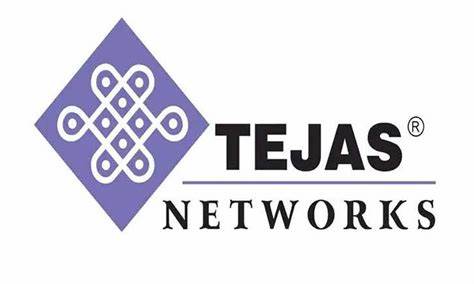Tejas Networks tanks 8% as net loss widens on higher costs

Tejas Networks tanks 8% as net loss widens on higher costs
On July 24, the shares of Tejas Networks experienced a significant decline of 8 percent. The drop in share value came after the company reported a widening of its net loss in the April-June quarter compared to the previous quarter.
For the April-June period, Tejas Networks posted a consolidated net loss of Rs 26.3 crore, which is notably higher than the loss of Rs 11.5 crore recorded in the previous quarter. Furthermore, in the same period a year ago, the company’s net loss was Rs 6.6 crore.
The increase in net loss indicates financial challenges for the company during the specified period. Such financial performance updates can impact investor sentiment, leading to fluctuations in the company’s share price. Investors and market analysts are likely to closely monitor the company’s future financial reports and management strategies to assess its path to recovery and growth.
As of 1.06 pm, Tejas Networks’ shares were trading at Rs 804.90 on the National Stock Exchange, showing a decline of 4.8 percent. The trading volumes were robust, with 19 lakh shares being traded on the exchanges, surpassing the one-month daily traded average of 16 lakh shares.
The company’s financial results for the April-June quarter showed a significant drop in revenue, declining by 37.2 percent sequentially. The revenue for this quarter was approximately Rs 188 crore, down from Rs 299.3 crore in the previous quarter. However, when compared to the same period last year, the company’s revenue demonstrated substantial growth, with a year-on-year increase of over 46 percent.
The contrasting year-on-year performance suggests that the company might have faced certain challenges or market fluctuations during the quarter, which impacted its revenue. The decline in share price and strong trading volumes indicate that investors are closely monitoring the company’s financial performance and responding to the latest earnings report.
Investors and market analysts may seek further insights from the company’s management and financial statements to understand the factors contributing to these fluctuations and their potential implications for the company’s future prospects.
The decline in revenue for Tejas Networks in the April-June quarter was attributed to the transition to EMS (element management system) facilities. The company faced delays in receiving components during this period because one of its EMS suppliers was in the process of relocating their facilities.
This transition caused disruptions in the supply chain and impacted the company’s revenue during the quarter. However, it’s worth noting that the issue has been resolved since then.

In addition to the revenue drop, Tejas Networks also experienced a widening of its EBITDA (Earnings Before Interest, Taxes, Depreciation, and Amortization) loss. The EBITDA loss for the company in the June quarter reached nearly Rs 47 crore, which is a significant increase compared to Rs 8 crore at the end of March and Rs 7.3 crore in the same period a year ago.
The widening EBITDA loss indicates that the company faced challenges in managing its operational costs and generating profits during the quarter. This financial metric is essential for investors and analysts to assess the company’s profitability and overall financial health. Market observers and investors may seek further information from Tejas Networks’ management to understand the specific reasons behind the increase in EBITDA loss and their plans to address the financial situation going forward.
Indeed, the higher losses incurred by Tejas Networks can be attributed to a combination of factors:
1. Employee Stock Option (ESOP) Charge: The company incurred a charge of Rs 31.3 crore for ESOPs, which refers to the expenses related to employee stock compensation plans. ESOPs are a form of employee incentive, where employees are granted the option to purchase company shares at a predetermined price, often lower than the market value. This expense impacts the company’s financials and can contribute to higher losses.
2. Investments in Research and Development (R&D): Tejas Networks is likely investing significantly in research and development to enhance and innovate its products and technologies. While R&D is essential for the company’s growth and competitiveness in the telecom and data networking industry, it can result in increased expenses and temporarily impact profitability.
3. Increased Component Costs: To expedite fees and spot buys, the company might have incurred higher costs for components necessary to manufacture its products. This could be due to supply chain disruptions, such as the delays in receiving components during the transition to EMS facilities.
4. Ensuring Timely Delivery: The higher investments and expenses mentioned above are likely aimed at ensuring the timely delivery of critical customer shipments. Meeting customer demands and fulfilling orders on time are crucial for maintaining customer satisfaction and retention, but these efforts can come at an increased cost to the company.
While these factors have contributed to higher losses in the recent quarter, the management’s decisions and strategies are geared towards long-term growth and maintaining a competitive edge in the market. As the supply chain disruptions are resolved, and R&D efforts bear fruit, the company may see improvements in its financial performance in the future. Investors and analysts will closely monitor the company’s performance and management’s actions to gauge its trajectory in the coming quarters.
Despite the challenges reflected in the Q1 earnings, there are some positive aspects for Tejas Networks:
1. Robust Order Book: The company’s order book stands at a strong Rs 1,909 crore at the end of the June quarter. This indicates that Tejas has a significant pipeline of orders from customers, which provides revenue visibility for the coming quarters.
2. Execution of Orders: Tejas Networks anticipates executing a substantial portion of its order book, with 50-60 percent likely to be completed by the end of the current fiscal year. This indicates the company’s confidence in fulfilling its commitments and delivering on customer demands.
3. Successful Commissioning of Pilot Network: During the quarter, Tejas Networks successfully commissioned the pilot network of 200 sites for BSNL’s 4G network in Punjab. This achievement showcases the company’s capabilities in providing telecom solutions and securing contracts with reputed clients.
4. Prospects for Future Deployment: Tejas expects to ramp up its supplies for deployment from the September quarter. This indicates that the company is well-positioned to increase its production and delivery capabilities, meeting the demands of its customers in a timely manner.
These positive developments highlight that Tejas Networks is actively working to address its challenges and capitalize on growth opportunities. The company’s order book and successful network commissioning are positive indicators of its potential for future growth and stability in the market. As Tejas continues to execute its orders and expands its customer base, it may see improvements in its financial performance in the coming quarters.




